In the middle of the choas in the Dutch East Indeas in Febrauri 1942, Abbekerk was send from Singapore to Oosthaven, Sumatra. There a small regiment of gunners that had been aboard since she left England was send adhore, taken with them all the Bofors guns, leaving Abbekerk with only two Lewis machine guns as defence against airplanes.
Since Sumatra was overrun by the Japanese only days later I never expected to find out what had happened with those gunners. Two months ago I recieved an email from Peter North, son Geoff North, who was the second Lieutenant in charge of the gunners on Abbekerk. Peter found a picture of Abbekerk in his fathers things and thanks to the Internet a connection was quickly made.
Lt. Geoffrey North was part of the 35th Light Anti Aircraft Regiment. This Regiment was send to Persia in convoy WS.12Z. Most of the troops were travelling on the big liner/troopship Narkunda and Abbekerk was carrying the regiments equipment, including Bofors guns and Ammunition. 16Â men were placed on Abbekerk to man two Bofors guns and Second Lt North was in charge.
For him the voyage on Abbekerk was the first time outside England and in his letters wife Freda (and son Peter)Â he tells about the voyage and life on Abbekerk (I quote from Peter Norths emails(PK)):
In these last letters from Britain he describes the facilities on the ship which clearly impressed him. He had a “first class cabin to myselfâ€, very good food -“everything unrationedâ€, with “lashings of butter etcâ€. It was clear that the availability of a wide variety of food provided a dramatic comparison with wartime rationing in England. He said that “there’s a lovely saloon lounge – with cocktail bar, wireless etcâ€, and also “a small modern libraryâ€. Whilst all this was clearly different from the troops’ accommodation, he said that “the boys are well off too – much better than Army rationsâ€. As he settled in, he kept reassuring Freda how well he was being looked after: “You should see my super cabin with separate toilet and a steward who calls me with coffeeâ€; but he also said that there was hard work to be done which kept him busy, with his troops “as keen as mustardâ€.

Geoff is quite an artist and made a lot of drawings he managed to keep with him the rest of the war. This is part of WS.12z on its way via Freetown to Durban.
The convoy sails to Freetown and then Durban. Geoff descibes the ship’s officers as “fat, jolly and excellent men to be with – they make quite a fuss of me which is very nice†and looked after him very well. He later said that one of the officers had become a particular friend. He said that he did not think that the Dutch ship’s officers realised that he was only a very new second lieutenant but he felt that he was “quite an important one nowâ€.

This is a drawing he made from convoy DM.01. (a small but fast part of WS.12Z) send reinforce Singapore now Japan had entered the war.
When Japan entered the war things changed rapidly and Abbekerk was part of the small but fast convoy DM.01 to Singapore. It was clear that Japanse airplanes were a serious threat wich called for serieus measures: the crew of Abbekerk put Bofors guns from the cargo on deck and Geoff trained crewmembers how to use them.
Abbekerk spend almost 3 weeks anchored in Singapore that was under constant attack. Here the gunners helped to unload ammunition when labourers refused to unload “the floating bomb”.
When at last Abbekerk left Singapore for Oosthaven the gunners were still aboard.
This seemed a bit strange as the rest of the 35th disembarked in Singapore. It also is strange that ABbekerk was send to Oosthaven as all other Ships went to Palembang and Batavia. Whith what I know now it is very well possible that the 16 gunners and there guns were the main reason to go to Oosthaven as part of the 35th had allready gone to Sumatra. Its not clear how many guns Abbekerk had aboard when she anchored in Oosthaven, but from various stories it must have been at least 3 but more likely 6 guns. (PK)
Abbekerk sailed for Oosthaven around January 30. Geoff and his gunners left Abbekerk at Februari 3rd. What exactly happend teh next weeks is unlear. Palembang was under attack and on the February 16 Geoff arrived at Batavia on Java. By that time he met parts of the 35th that had been retreating almost all the time since the disembarked at Singapore. By that time the had to abandon all heavy equipment an were to defend the Tjimaha airfield near Batavia as Infantery. When Java capitulated Geoff was taken prisoner.
First he was in a POW camp in Tandjong Priok, but later he was shipped back to Singapore and Changi. In October he was shipped to Borneo where he spend the rest of the war in Kuching POW camp. What happened in these camp is hard to imagine. From a simular camp in Sandakan none of the prisoners survived. From Kuching camp only half of the POW were alive when the camp was liberated.
Geoff was one of the initiators of ” the Garden” which grew to a productive garden that was vital as supplement for the foodration they recieved. He was head gardener for over a year and did well:
There seems little doubt that his work contributed greatly to both the health and the morale of his fellow officers. This was recognised by a moving testimonial written in September 1945 by the CO, Lt.Col T.C.Whimster:
“The physical and mental condition of the officers and men under Japanese administration deteriorated to an almost incredible extent, many deaths occurring. This state was entirely and only due to starvation. It was in these circumstances that Mr North undertook to produce as much food as possible from the area available in the camp.
It should not be hard to imagine the tact necessary and the careful organising required to ensure constant supplies of food aided only by persons incapable of only but the lightest and shortest periods of labour. It was vital to produce food and the difficulty was to obtain this food by hard manual labour under tropical conditions of heat and poor and unsuitable ground, whilst suffering from lack of the food essential to give the necessary energy required.
It is due to Mr North’s efforts, perseverance and leadership that the lives of officers and men, including my own, under my command have been saved, for without his unfailing good nature, cheerfulness under difficulties, adaptability and planning capabilities, we should undoubtedly (have) starved, as was the case in some other camps.
I would thank Mr North for all his work and recommend (him) in the highest possible way as an organizer and as a loyal, hard fighter of difficulties, however great.â€
Geoff returned home on the SS Ranchi November 24.
Many thanks to sir Peter North for sharing Geoff’s story with me.
Zaandam March 30, 2009

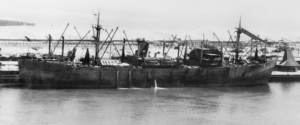
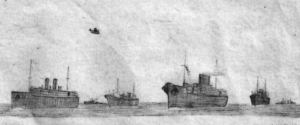
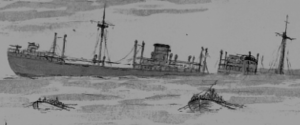
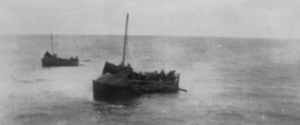
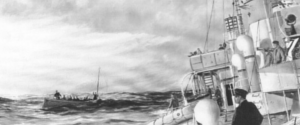
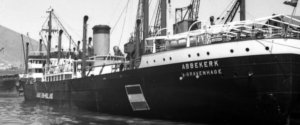



Just to say that thanks to this site, I was put in touch with Peter North, son of Geoff North, and got a lot of information about camp life from him. I understand the original papers shown here are now in the Imperial War Museum.
I am one of the late Lt Col TC Whimster’s four daughters and I would be very grateful to receive a copy of the original letter above or to be put in touch with anyone who has memories of him.
He spoke little about his time in Changi or Kuching. As a child I remember seeing a simple exercise book with a record of the deaths of POWs in the camp. I have found three photos of him in the Australian War Archive collection, taken the day after Batu Lintang was liberated by the Australians and know the ship he was transported on from Singapore to Borneo – the SS De Klerk which was renamed the Imbari Maru by the Japanese. The wreck of this former steamer lies off the Lubuan coast and it is now known as the Australian Wreck.
Look forward to hearing from anyone who can give me more information.